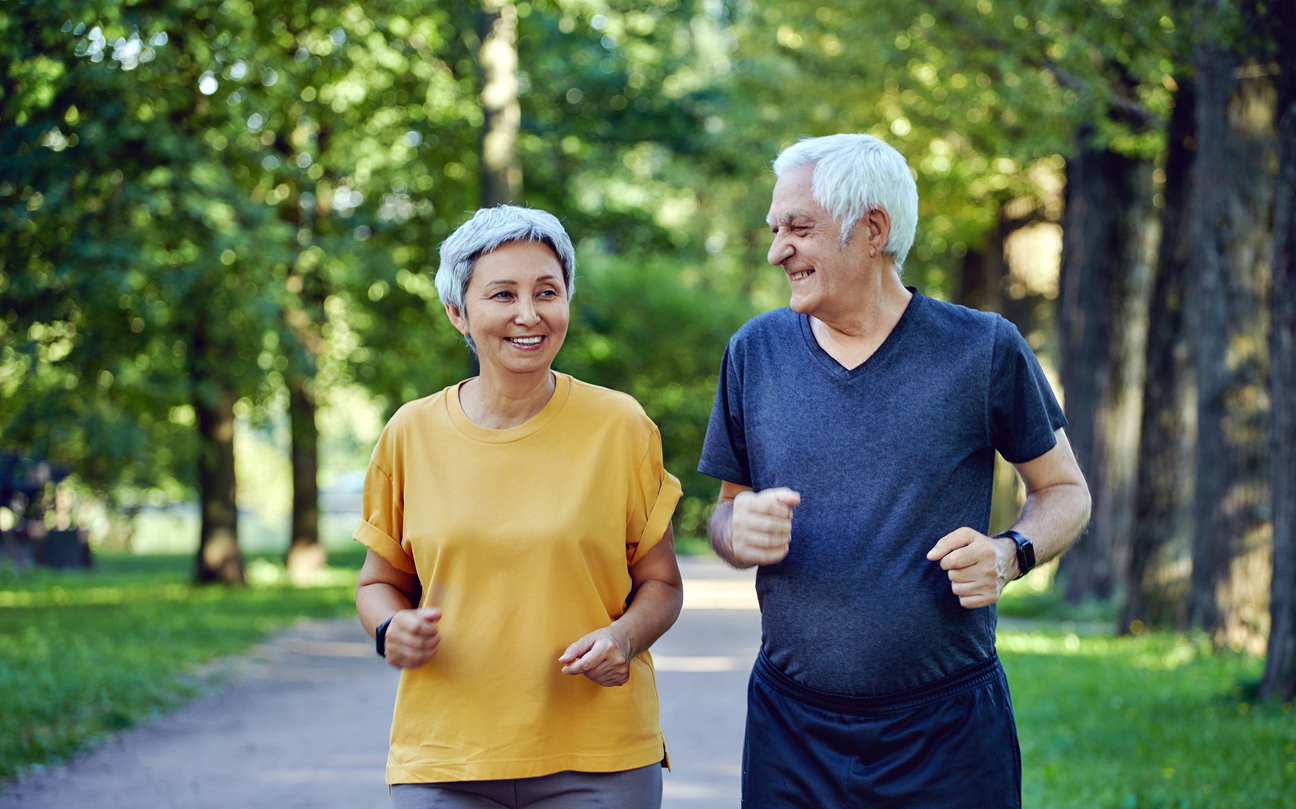The Importance of Physical Activity
Additional Authors: Leacey Brown, Megan Jacobson
The American College of Sports Medicine and Centers for Disease Control recommend aiming for 150 minutes of moderate-intensity aerobic exercise every week for all adults over age 18; this breaks down to 30 minutes per day, 5 days per week. Examples of moderate-intensity aerobic activities include brisk walking, bike riding, hiking, or dancing. In addition, muscle-strengthening exercises should be performed on at least 2 days per week. Examples of muscle-strengthening activities include lifting weights or resistance training, body-weight exercises, or yoga.
The decline in physical activity among older adults is a well-documented occurrence that can have negative implications on overall health and well-being. In each decade of life, participation in both cardiovascular and strength training exercise trend downward. The reduction in physical activity can lead to decreases in muscle and bone mass, undesired body composition changes, increased risk of chronic disease, and cognitive decline. There are several factors that lead to this increase in sedentary behavior and decline in physical activity rates that are unique to older populations.
The barriers and strategies listed below can help you to incorporate more physical activity into your daily routine.
Overcoming Physical Activity Barriers
PHYSICAL LIMITATIONS
- Barrier: Reductions in muscle mass (age-related sarcopenia), joint stiffness, and decreased flexibility are common and can make it more challenging to engage in regular physical activity.
- Strategy: Start slow, with small increments of activity (aim for at least 10 minutes at a time), incorporate proper warm-up and cool-down activities to prepare the body for activity, avoid times of day when stiffness is at its peak, such as early morning. Make sure to wear supportive shoes and loose-fitting clothing that you can move freely in.
LIFESTYLE CHANGES AND LACK OF SOCIAL SUPPORT
- Barrier: Retirement, changes in social circles, and the loss of a spouse or friends can lead to increased sedentary behavior. A lack of structure in daily routines can contribute to reduced physical activity.
- Strategy: Build exercise into your day, just like you would a meeting or appointment. Exercise can be more enjoyable when you participate with others. Find a friend and make a regular exercise date. Research facilities in your area that cater to older adults and try a group fitness class. There are many choices, so if the first one is not your favorite, try another option!
CHRONIC HEALTH CONDITIONS
- Barrier: With age, comes an increased likelihood of being diagnosed with a chronic health condition that may cause symptoms that make physical activity challenging.
- Strategy: Work with your healthcare providers to identify a safe routine for incorporating fitness into your life. Find a local support group in your community and share resources. Remember that regular exercise works as a preventative practice for many chronic diseases!
LACK OF ACCESSIBILITY
- Barrier: Finding safe and accessible places to exercise may be challenging in your community due to lack of transportation, weather, or handicap accessibility issues.
- Strategy: There are many opportunities for exercise without leaving the comfort of your home; anything that gets your body moving is beneficial. Many public locations, such as malls, have walking loops that are open year-round. Find transportation services within your community that may provide rides to classes or facilities nearby.
FEAR OF INJURY
- Barrier: Older adults may be concerned about the risk of injury during physical activity, especially if they have experienced falls or accidents in the past. This fear can lead to avoidance of exercise.
- Strategy: Focus on proper technique. Follow the cues of exercise leaders and ask questions of facility staff. Try seated exercises or other modifications to reduce fall risk. Make sure to incorporate a proper warm-up and cool-down into every exercise session.
MISCONCEPTIONS ABOUT EXERCISE
- Barrier: Some older adults might hold misconceptions about exercise, believing that they are too old or frail to benefit from physical activity.
- Strategy: Everyone, regardless of age, can benefit from exercise and physical activity. You do not need to possess special skills or talents to exercise. There are also many activities you can do that are completely free and require zero equipment, such as walking or dancing! Find enjoyable activities that you can incorporate into your daily routine.
In Summary
Engaging in regular physical activity across the lifespan can slow the decline of many negative health consequences and help improve cardiovascular fitness, increases in muscle and bone mass, balance, cognition, and overall well-being. There are many things that can impede a regular fitness routine, but having a plan and strategies for when a barrier pops up can be beneficial in remaining committed to staying active.
Still not sure where to start? Try one of SDSU Extension’s physical activity programs, including Walk with Ease or Fit & Strong. Walk with Ease is a 6-week program focused on education and improving walking endurance and overall health. Fit & Strong! is an 8 or 12-week program focused on building functional fitness and strength and reducing pain. Both programs are free for participants and are led by trained leaders with virtual and in-person options available statewide.

